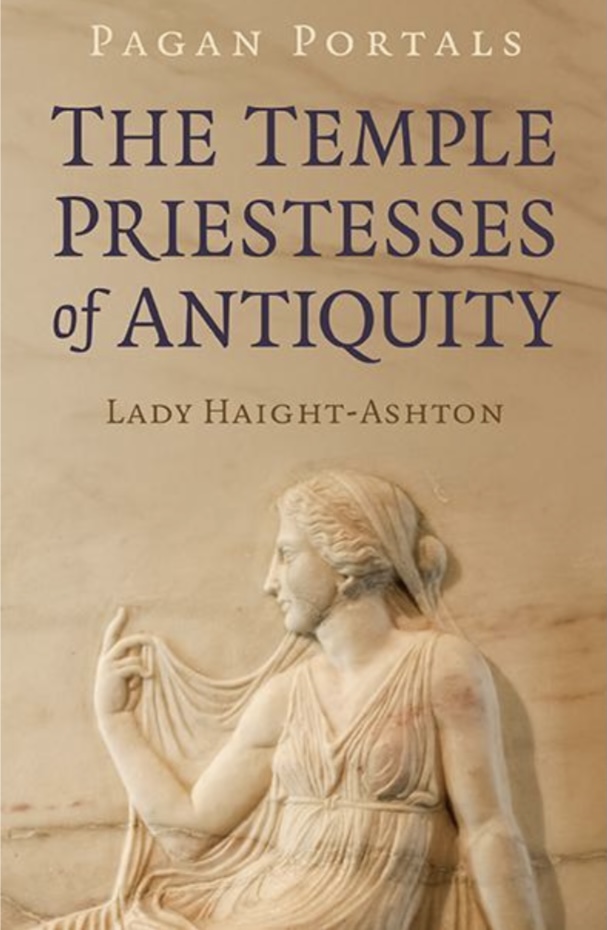
Book review by Exclusive Magazine
| Lady’s newest book ‘The Temple Priestesses of Antiquity’ was recently reviewed by Exclusive Magazine! |
| The Temple Priestesses of Antiquity tells the story of the Oracles and Sibyls, Seers, Psychics, Sacred Dancers and Healers of ancient civilizations.
They were empowered women who enthralled those who sought their advice and served the Goddess they revered. Tales about ancient Priestesses and the Sacred Temples where they lived, prayed and worked thousands of years ago, have fascinated archaeologists and historians for decades. Living in complex temple structures above ground and in underground cavernous tunnels, they shared vows of chastity and lived a dutiful and respected life. The Temple Priestesses of Antiquity is a story of these women, some well known and others forgotten to the centuries. As I am sure we are all more then well aware by now, female practitioners of the medical arts were active in the ancient world. Worship of Isis, the great goddess of medicine, was universal among ancient Egyptians; magnificent temples were built in her honor and priestesses of Isis were regarded as physician-healers who obtained their healing powers from the goddess. At Sais, a city at the mouth of the Nile, women were both students and teachers at a women’s school specializing in child-bearing issues. Egyptian records also show that women studied at the royal medical school at Heliopolis as early as 1500 BC. Indeed, illustrations of women performing surgery were common on tombs and temples throughout Egypt, suggesting that female physicians were widely accepted by the general population. In ancient Greece, the goddesses Athena, who cured blindness; Hera, the chief healing deity; and Leto, the surgeon, were worshiped for their healing skills. Hygeia and Panacea, like their father Aesculapius, were sainted mortals who probably also had been independently practicing physicians. And, of course, Witch-hunting swept through much of Europe as the Middle Ages waned. Because women were not allowed to study medicine, skill in healing was assumed to have been obtained from the devil. Spinsters, widows, and other women who refused to conform to the expectations of their low social status, including female healers and midwives, were frequent targets of witch-hunts. Scant evidence was required to convict though. I could go on, but you get the point and thus what Lady Haight-Ashton has brought forth here is a chance to be inspired, to be more informed and to be schooled, if you will, through her reporting of the hidden and often purposely misrepresented (and, for the most part) much misunderstood Herstory inside the life of Temple Priestesses of Antiquity. As we enter the third millennium, women have made spectacular advances. Women now comprise nearly half of incoming medical students and will represent a third of all practicing physicians by 2025. The roles of women in medicine have ranged from healers with skills derived from deities, to respected colleagues, to alleged witches, to intruders into the male medical establishment, to respected peers once again. Alternately aided and hindered by education and by opportunities to practice, women have persisted throughout time and shifting social, religious, and scientific ideologies to make strides in medicine. And so Ashton, who reveals herself to be a modern Oracle and Sibyl, who does not live in a temple complex or underground cavern, instead has a Coven and teaches and works within the confines of her historic 18th century home in a little village in Maine, brings forth a clear, concise and veritably understandable (to all who choose to enter) doctrine where the language is not only descriptive, but the visions created within her prose ones that clearly reveal the mysteries of this Sacred Calling and its legacy for the today’s Modern Temple Priestess.
|
 Copyright secured by Digiprove © 2022 Lady Haight-Ashton
Copyright secured by Digiprove © 2022 Lady Haight-Ashton